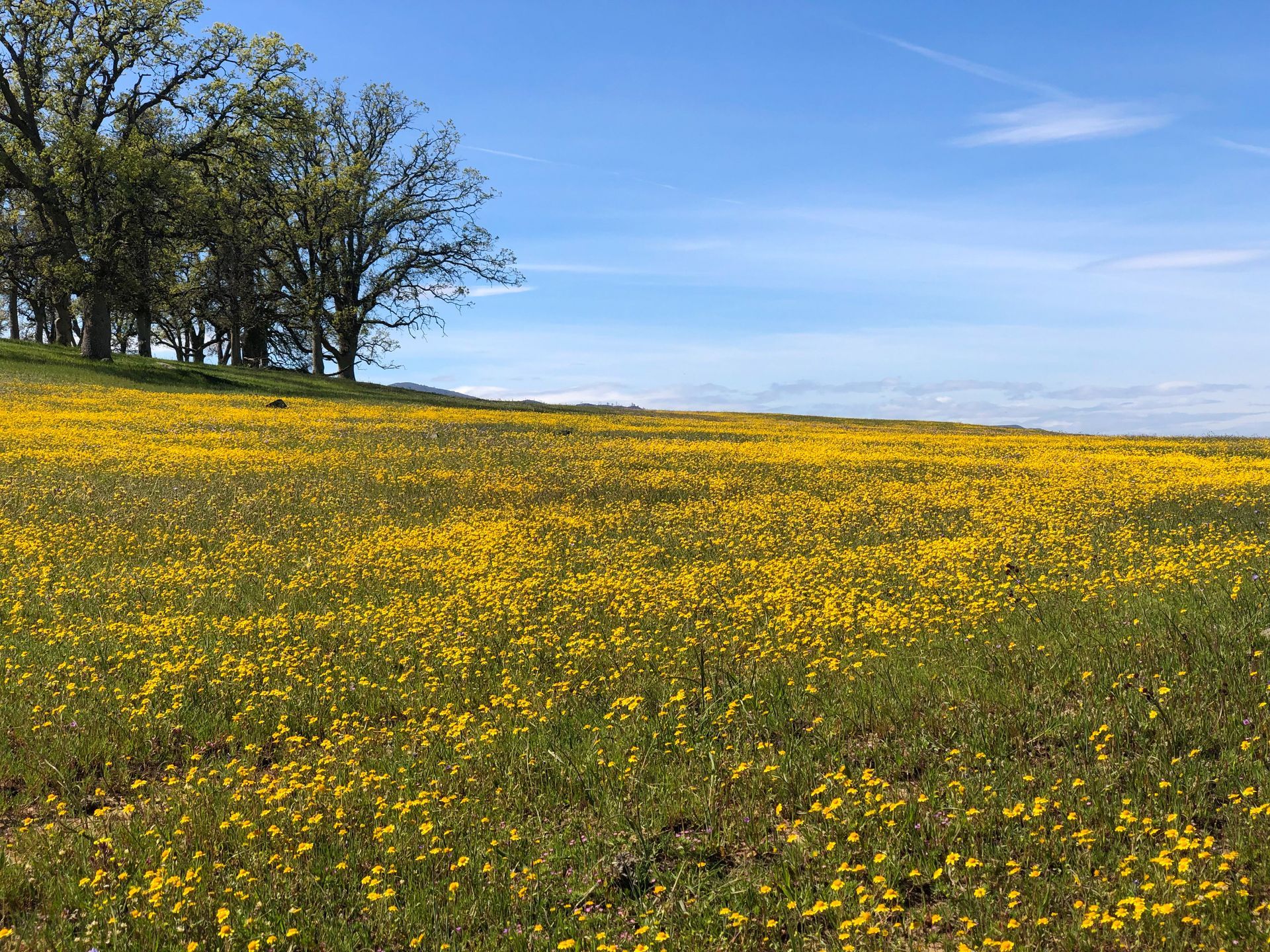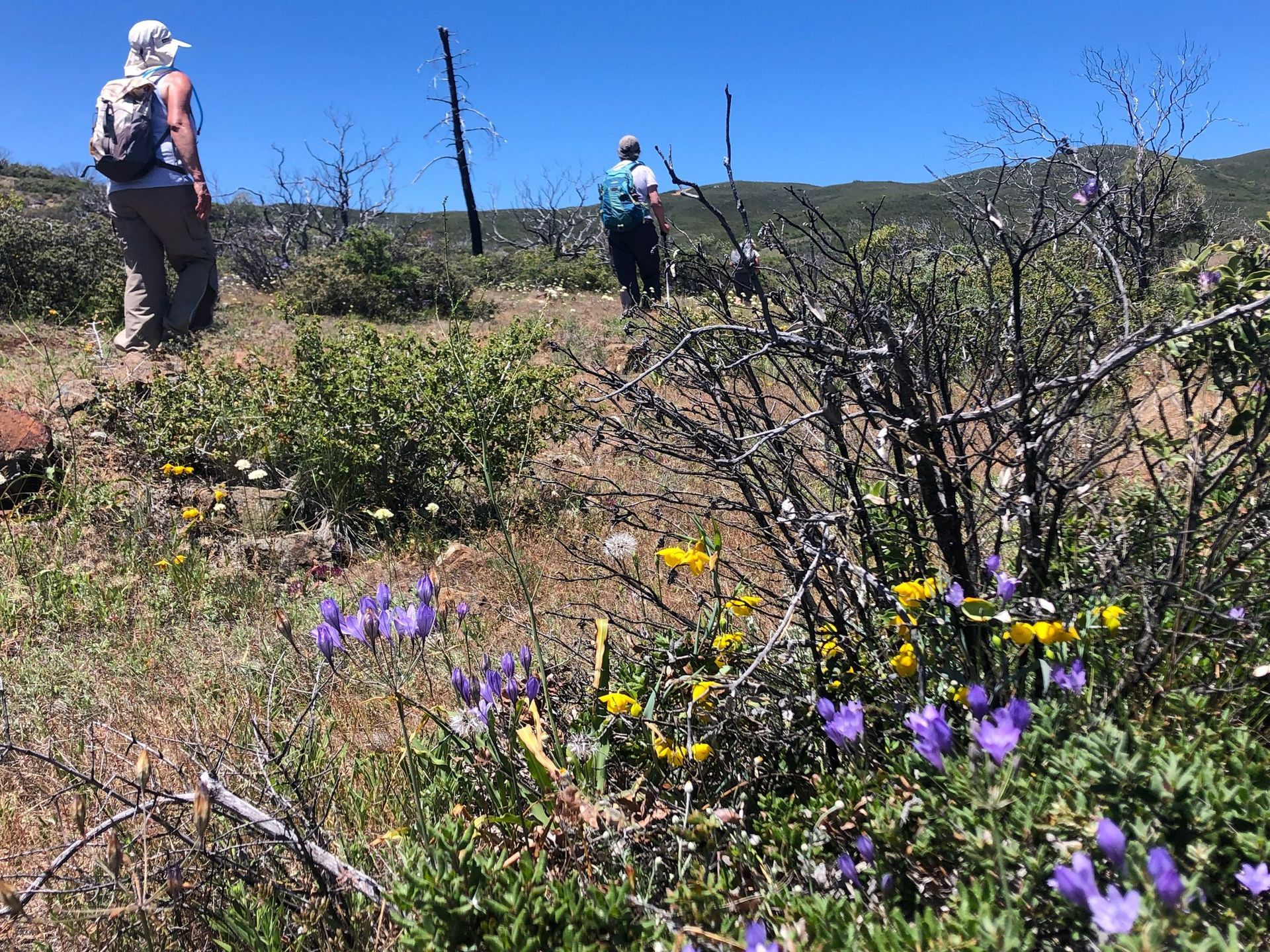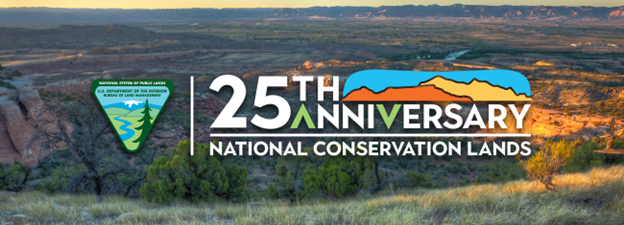Enjoying Outside, Inside - Natural Pest Repellants
 Pelargonium citronellum
by Gawie Malan
Pelargonium citronellum
by Gawie Malan
Okay, okay; having outside critters sneaking inside your house maybe doesn’t really count as “enjoying outside, inside” but it’s bound to happen when someone opens a door. I found some natural and maybe even pleasant ways to help keep those little buggers outside where they belong.
Most of us have probably been around a citronella candle to keep mosquitoes away but did you know that you can grow a citronella plant in your back yard or in a pot on your patio? Citronella essential oil comes from a type of lemongrass (C ymbopogon ) but there is also a citronella plant ( Pelargonium citronellum ) that is in the geranium family and can easily be grown in Northern California. Simply having the plant nearby doesn’t repel mosquitoes but if you “fluff” it up a bit to expose the oil or crush up a couple of leaves and rub the oil on your exposed skin, it should repel those nasty little guys. Side note, the citronella plant, also known as a mosquito plant, has also been known to repel black flies, fleas, and ticks too. And if that wasn’t a good enough reason to plant one, it’s bee and hummingbird friendly too!
If you have ant invaders, try and spice things up by sprinkling ground cinnamon, paprika or garlic around doors and windows where they can sneak in. You may have to repeat the application weekly to keep the spiciness fresh though and do watch out for your kitties and pups as the spices might repel them as well. And do keep in mind that garlic is harmful to dogs so maybe only use that in places where Fido’s nose can’t reach. If ants have already made their way into your house, try a one-to-one mixture of vinegar and water to wipe down areas where you found them. Ants leave a pheromone trail to help other ants find the food source and vinegar works to neutralize the PH level of that pheromone. Fun fact, if you squish an ant and take a whiff, you can actually smell the pheromone.
If your furry friend is adventurous and likes to explore areas where the vegetation is tall and thick, it can be pretty easy for them to carry hitch hikers like fleas and ticks back inside the house. Those buggers can be hard to spot on dogs and cats with long hair and even harder to get rid of. Using a few drops of essential oils on your pet’s neck can help repel them. Some good ones to try include:
- Cedarwood - actually deadly to ticks and their larvae but safe for people and pets and it has a great musky, outdoorsy scent
- Lavender - also toxic to ticks and tick larvae and smells so, so nice!
- Peppermint - not only smells fresh but ticks (and rodents) hate it. Typically, kitties don’t care for it either so maybe make sure they’re ok with smelling like toothpaste before you put it on them because bathing a cat is no fun
- Citronella - has already been hailed as a great mosquito repellant but combine it with Thyme essential oil and you’ve got a very effective at tick repellant
- Pennyroyal - a robust member of the mint family but it’s best used on rugs or under patio cushions, not on skin
- Garlic - also effective against ticks but nobody wants to smell like they’ve been in the kitchen all day so it’s best used on outdoor areas where you don’t stick your face
Fun fact, ticks are icky and hopefully you won’t find one but if you do, look closely. Bugs like beetles and ants have six legs but ticks have eight and are related to spiders.
If you’re finding cockroaches inside your house it’s because they like hanging out in nice places too. If you really prefer they NOT be inside your house, try diatomaceous earth which is widely available in the gardening section of your local hardware store. Diatomaceous earth is the fossilized remains of diatoms; minute aquatic organisms that have accumulated the bottoms of oceans, lakes, rivers and streams. It’s essentially nontoxic to fish, wildlife, pets, and people but kills all kinds of things we don’t really like having inside including cockroaches, crickets, fleas, ticks and spiders. It works as a desiccant and dehydrates them from the inside out. It can be used indoors or out and even though it’s non-toxic to pets, I’d still only use it in places where curious pets won’t disturb it.
Hopefully these ideas will help keep the outside critters from enjoying the inside of your home.
-Kristie Ehrhardt ( kehrhardt@tuleyome.org )
Tuleyome Land Conservation Program Manager
Looking for more articles like this? Click the hashtag below!
RECENT ARTICLES






